Judi Lynn
Judi Lynn's JournalA Monumental Portrait of NASA Astronaut Stephanie Wilson Crops Up in Atlanta
OCTOBER 11, 2021
The earthwork is the latest in land artist Stan Herd’s impressive, decades-spanning portfolio

Stretching 4,800 square feet in size, the piece coincides with the United Nations' International Day of the Girl Child initiative and is also part of World Space Week.
Courtesy of Stan Herd
Jennifer Nalewicki
While most artists measure their artworks in inches, Stan Herd measures his in acres. For the past 40 years, the Kansas-based artist has been using farmland, pastures, grassy fields and any other large swaths of open land as his canvas, creating massive earthworks that are best seen from the sky, including a massive vase of flowers and a 2005 edition of the Kansas state quarter.
Fittingly, for his next creation, which will debut today at Woodruff Park in downtown Atlanta, the 71-year-old crop artist is looking up to the sky for inspiration. Stretching 4,800 square feet in size, the piece coincides with the United Nations' International Day of the Girl Child initiative and is also part of World Space Week, an annual event that celebrates global accomplishments in science and technology. Since this year’s theme is Women in Space, Herd has created a portrait of Stephanie Wilson, a veteran NASA astronaut with three space flights under her belt (she’s also the second African American woman to go into space), and one of 18 astronauts who are a part of Artemis, NASA’s lunar exploration program that is scheduled to send the first woman to the moon in 2024.
Herd, a painter and sculptor by trade who attended the University of Wichita on an art scholarship, admits that making artwork of this magnitude is no easy task. From start to finish, it can take weeks and even months to complete a single piece. To make each earthwork, Herd begins by creating a computer sketch using a grid technique that he says is “similar to the way Michelangelo created the [frescoes] on the Sistine Chapel ceiling,” where each square segment translates to a specific measurement. In the case of the Atlanta artwork, one square inch of the sketch equals 10 actual feet.

Herd calls his 4-acre creation, Young Woman of China, his most important earthwork. The piece was produced in the Yunnan Province over a two-year period with the assistance of his family and hundreds of Chinese engineers, laborers, artists, heavy equipment operators and students. Courtesy of Stan Herd
“The real art happens when I transfer the drawing onto the ground,” says Herd, who will often incorporate found elements such as rocks, mulch and dirt to add dimension to a piece. In a piece he created in 1988 which he dubbed Cola Wars, he even had volunteers dress in red and blue T-shirts to replicate a duo of oversized Coca-Cola and Pepsi cans.
More:
https://www.smithsonianmag.com/travel/a-monumental-portrait-of-nasa-astronaut-stephanie-wilson-crops-up-in-atlanta-180978838/
On Pausing Acknowledgement of Indigenous Land
October 13, 2021
Three anthropologists explain why land acknowledgments and the related welcoming ritual can help erase history.

A portion of a map that erases the borders colonial powers drew, and shows instead the Indigenous territories, treaties and languages of North America. (Native Land Digital, CC BY-SA)
By Elisa J. Sobo,Michael Lambert and Valerie Lambert
Many events these days begin with land acknowledgments: earnest statements acknowledging that activities are taking place, or institutions, businesses and even homes are built, on land previously owned by Indigenous peoples.
And many organizations now call on employees to incorporate such statements not only at events but in email signatures, videos, syllabuses and so on. Organizations provide resources to facilitate these efforts, including pronunciation guides and video examples.
Some land acknowledgments are carefully constructed in partnership with the dispossessed. The Burke Museum at the University of Washington in Seattle describes this process:
“Tribal elders and leaders are the experts and knowledge-bearers who generously shared their perspectives and guidance with the Burke. Through this consultation, we co-created the Burke’s land acknowledgement.”
More:
https://consortiumnews.com/2021/10/13/on-pausing-acknowledgement-of-indigenous-land/
Cathedral City cheese, Anchor butter and Cadbury chocolate 'linked to Amazon deforestation', Greenpe
Cathedral City cheese, Anchor butter and Cadbury chocolate ‘linked to Amazon deforestation’, Greenpeace claims
Dairy in household brands is from farms using animal feed from soya supply chain connected to environmental destruction
Harry Cockburn
Environment Correspondent
2 hours ago
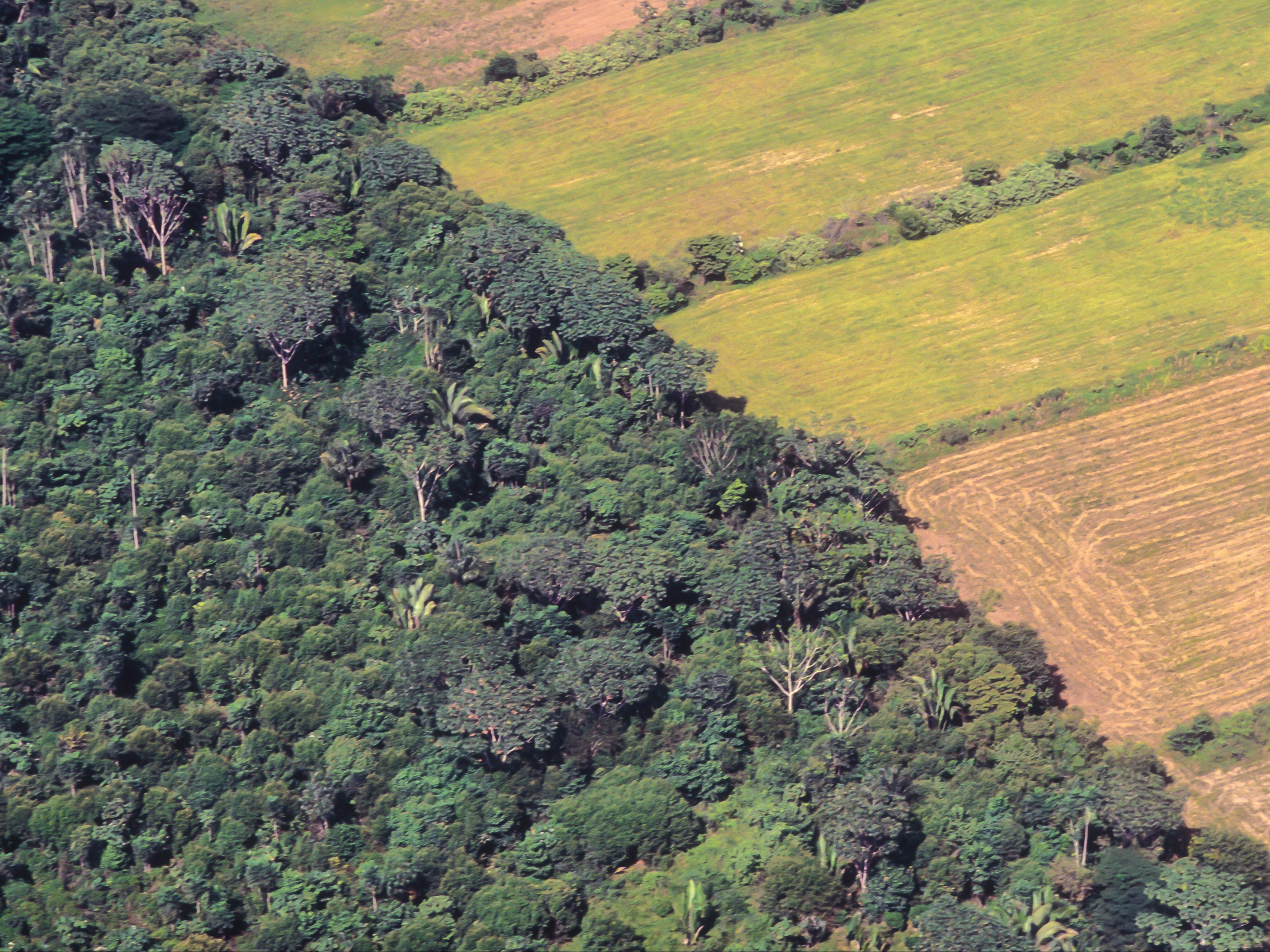
Soya farm field besides the original forest of the Amazon in Brazil
(Getty)
Well known supermarket brands such as Cathedral City Cheddar, Cadbury chocolate, Anchor butter, Country Life butter and Davidstow Cheddar, have been linked to “the destruction of vast tracts of Brazilian forest”, through use of farms which feed cattle soya sold by a controversial supplier.
A group of British farms, which sell their milk to these companies, source some of their animal feed from companies buying Brazilian soya exported by the US grain giant Cargill, the investigation by Greenpeace, ITV and the Bureau for Investigative Journalism claims.
They allegedly uncovered a complex soya supply chain linking British dairy farms to “environmental devastation” thousands of miles away in Brazil’s Amazon and Cerrado regions. Both regions are already at huge risk from further deterioration from fire and deforestation, largely to create more agricultural land.
The Cerrado region, where most of Brazil’s soya is grown, is home to 5 per cent of the world’s plant and animal species, while the Amazon contains 10 per cent of all known species.
More:
https://www.independent.co.uk/climate-change/news/cathedral-city-cadbury-brazil-deforestation-b1938539.html
~ ~ ~
There's another part of Brazil that's dying even faster than the Amazon
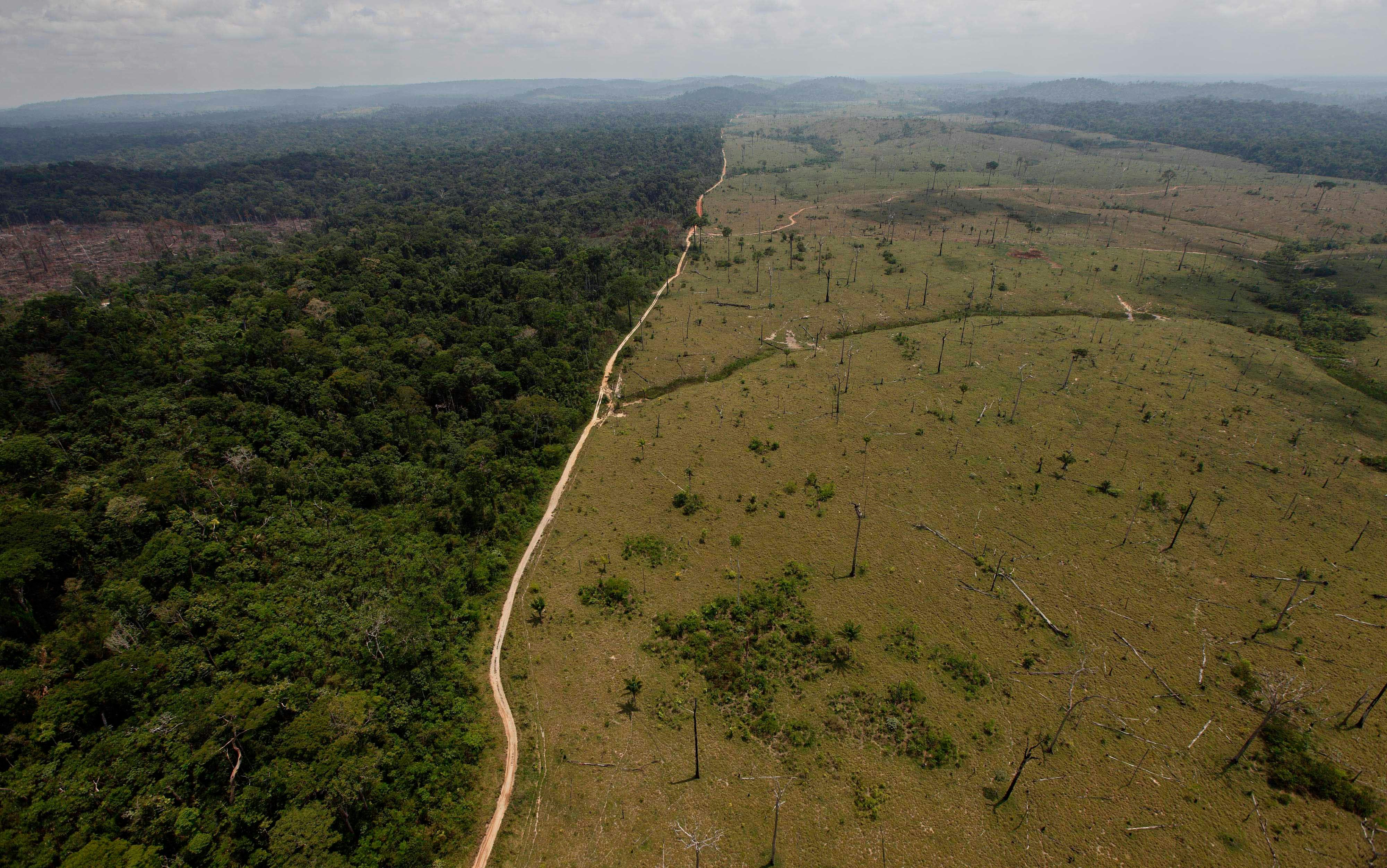
9.23.2019
The Amazon is still burning, but it's not the only environmental crisis Brazil is staring down at the moment. Just a few miles south of the rainforest is Brazil's Cerrado region, a massive, bio-diverse eco-region that stretches for more than 200 million hectares, accounting for more than 21 percent of all land in Brazil. The area serves as home to thousands of different species of plants, animals, and insects and serves as a massive carbon sink, removing carbon dioxide from the atmosphere. Just like the neighboring Amazon, the Cerrado is being destroyed by deforestation — except it's happening at a much faster rate.
To understand how devastating it would be to lose the Cerrado, it's important to know just how unique the region is. Cerrado is what is called "mosaic" habitat, meaning it is made up of multiple types of habitats. This particular one contains savannahs, grasslands, wetlands and forest. Those eco-regions contain more than 200 types of mammals, 800 species of birds, 120 kinds of reptiles, 150 types of amphibians, 1,200 species of fish, 90 million kinds of insects and more than 11,000 plant species. In total, the area is home to five percent of the planet’s animals and plants. According to World Wide Fund for Nature, the Cerrado is one of the most biologically diverse habitats in the world. It is also a particularly important source of water in the region, serving as the starting point for six of Brazil's 12 major hydrological regions. Water originating from the region also serves as a source of electricity for nine out of 10 Brazilians who get their energy from hydroelectric plants.
All of that should present a self-evident case for why protecting the Cerrado is important. Yet, just three percent of the area is considered to be legally protected. The rest is subject to use for all sorts of agricultural purposes. Since the 1950s, the unique landscape has been subject to massive amounts of deforestation. As much as 50 percent of the land has already been deforested, according to the World Wildlife Fund, and more than 70,000 hectares are disappearing every year. By 2030, it is projected that Cerrado will lose tens of millions of additional acres of its native vegetation. As that land disappears, the species that call it home are put in peril. That is particularly troubling because nearly 5,000 species of animal in the Cerrado are considered endemic, meaning they are native to the region. Pushing them out will result in them migrating to unfamiliar habitats where they may be invasive or struggle to survive. Many of the plant species found in the region have yet to be found anywhere else on earth, and destroying their habitat could mean losing those types of plants for good.
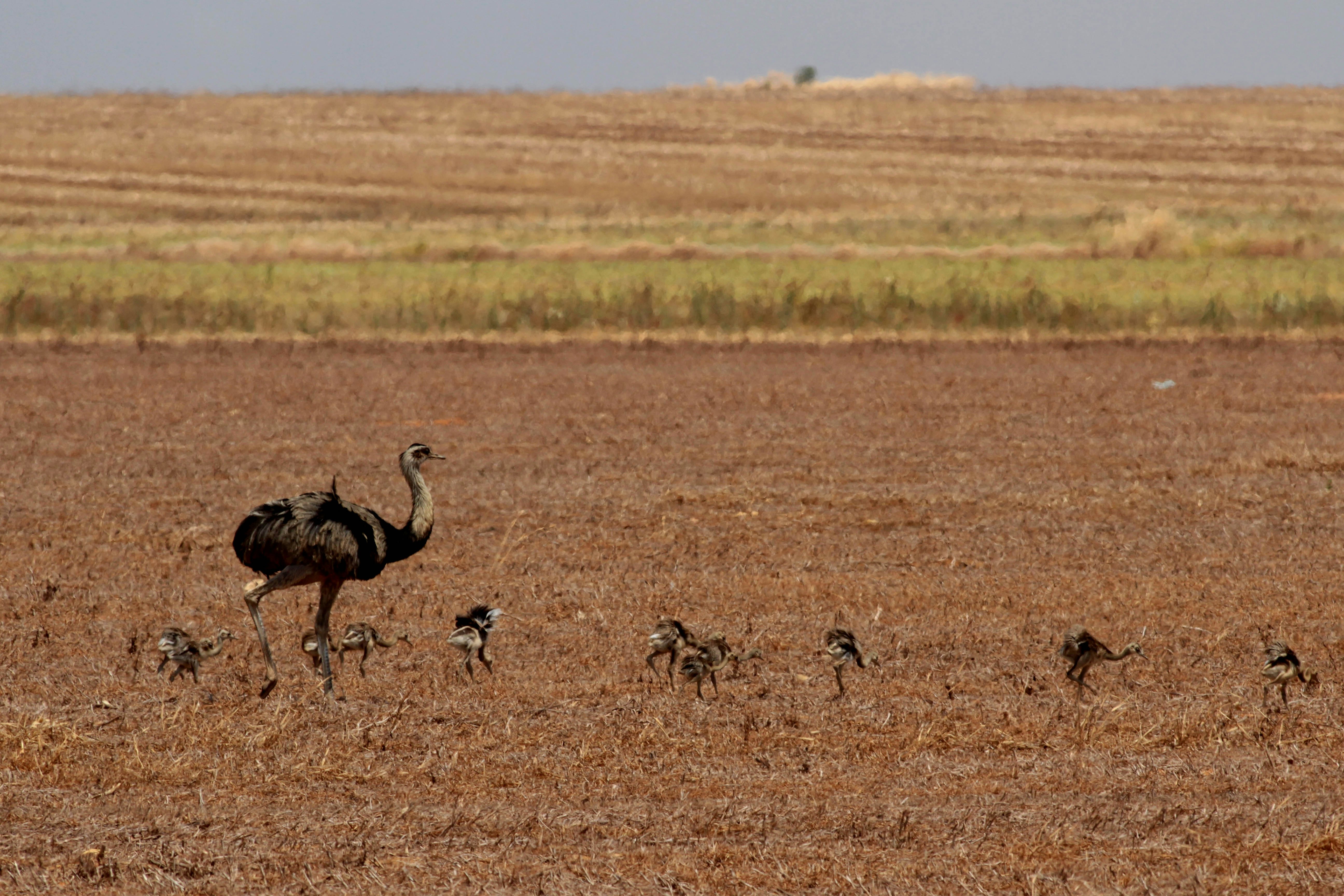
To understand how devastating it would be to lose the Cerrado, it's important to know just how unique the region is. Cerrado is what is called "mosaic" habitat, meaning it is made up of multiple types of habitats. This particular one contains savannahs, grasslands, wetlands and forest. Those eco-regions contain more than 200 types of mammals, 800 species of birds, 120 kinds of reptiles, 150 types of amphibians, 1,200 species of fish, 90 million kinds of insects and more than 11,000 plant species. In total, the area is home to five percent of the planet’s animals and plants. According to World Wide Fund for Nature, the Cerrado is one of the most biologically diverse habitats in the world. It is also a particularly important source of water in the region, serving as the starting point for six of Brazil's 12 major hydrological regions. Water originating from the region also serves as a source of electricity for nine out of 10 Brazilians who get their energy from hydroelectric plants.
All of that should present a self-evident case for why protecting the Cerrado is important. Yet, just three percent of the area is considered to be legally protected. The rest is subject to use for all sorts of agricultural purposes. Since the 1950s, the unique landscape has been subject to massive amounts of deforestation. As much as 50 percent of the land has already been deforested, according to the World Wildlife Fund, and more than 70,000 hectares are disappearing every year. By 2030, it is projected that Cerrado will lose tens of millions of additional acres of its native vegetation. As that land disappears, the species that call it home are put in peril. That is particularly troubling because nearly 5,000 species of animal in the Cerrado are considered endemic, meaning they are native to the region. Pushing them out will result in them migrating to unfamiliar habitats where they may be invasive or struggle to survive. Many of the plant species found in the region have yet to be found anywhere else on earth, and destroying their habitat could mean losing those types of plants for good.

Ostriches are seen at a farm in the Cerrado ecosystem, outskirts of Brasilia, Brazil, . . .
ERALDO PERES/AP/SHUTTERSTOCK
Its destruction also means the loss of a significant carbon storage center. According to the World Wildlife Fund, the Cerrado holds about 118 tons of carbon per acre — the equivalent to how much about 25 standard passenger vehicles emit over the course of one year. Greenpeace recently suggested that Cerrado's remaining vegetation could store up to 13.7 gigatonnes of carbon dioxide. For comparison's sake, global carbon emissions from fossil fuel use were just under 9.8 gigatonnes in 2014. The Intergovernmental Panel on Climate Change (IPCC) has warned continued destruction of lands like Cerrado could limit the region's ability to capture carbon, minimizing one of its important purposes in protecting not only the many species that live there, but also the overall wellbeing of the planet.
More:
https://www.mic.com/impact/brazils-cerrado-region-faces-deforestation-endangering-thousands-of-species-18794530
~ ~ ~

Deforestation in the Cerrado
Burger King Linked to a Whopping Million-Plus Acres of Deforestation
Half of Brazil’s savanna is already gone, and big soy has taken over
All photos by Jim Wickens/Ecostorm
By Joanna Nix | Mar 20 2017
You might think soy is just a green, harmless alternative for those trying to steer away from meat and toward a plant-based diet. Not exactly: Three-quarters of the world’s soy is used for animal feed, and about half of it is exported from South America—grown on deforested land that has been cleared away for massive soy fields.
“The soybeans connected to deforestation are making their way to the feed of the chickens, pigs, and cows that people all around the world eat,” says Glenn Hurowitz, CEO of the campaign group Mighty Earth. “Almost every international company that sells meat has some connection to deforestation in their supply chain.”
Enter Burger King.
Using satellite and supply-chain mapping tools, Mighty Earth connected the fast-food giant to a whopping million-plus acres of forest-clearing. In its new report, “The Ultimate Mystery Meat,” the global campaign organization identified two of Burger King’s biggest soy suppliers as the culprits: Cargill, the largest privately owned company in the United States, and Bunge, one of the biggest players in South America.
“The destruction of tropical forests causes something around one-fifth of the world’s total climate pollution, and deforestation also threatens some of the most endangered species in the world,” says Hurowitz.
More:
https://www.sierraclub.org/sierra/green-life/burger-king-linked-whopping-million-plus-acres-deforestation
Honduran opposition unites behind candidate for president, in major shift
October 13, 2021
4:50 PM CDT
Last Updated 8 hours ago
Americas
By Gustavo Palencia
2 minute read
TEGUCIGALPA, Oct 13 (Reuters) - The top Honduran opposition parties on Wednesday united behind Xiomara Castro as their candidate for a November presidential election, giving the wife of a leftist former president who was ousted in a coup a stronger chance of ousting the ruling party.
The National Opposition Union (UNO) party backed Castro, 62, wife of former president Manuel Zelaya and candidate for the Liberty and Refoundation (Libre) party for the Nov. 28 race, party representatives said.
Castro, who says she will establish diplomatic relations with China and legalize abortion in some situations, would be Honduras' first woman president.
The alliance shakes up the presidential race and presents a serious challenge to President Juan Orlando Hernandez's National Party, in power since elections after Zelaya was ousted in a bloodless military coup in 2009. Until now, the National Party has been leading in polls.
More:
https://www.reuters.com/world/americas/honduran-opposition-unites-behind-candidate-president-major-shift-2021-10-13/
Very courageous lady, in every sense.
Protecting The Environment Means Protecting Indigenous Peoples, Says Sonia Guajajara
Guajajara promises to keep fighting against the marco temporal' thesis at the Brazils Supreme Court, and to take the indigenous lands rights agenda to COP26
7.oct.2021 13h12
Cristiane Fontes
Marcelo Leite
SÃO PAULO y OXFORD
Sonia Guajajara, 47, leader from the Arariboia Indigenous Land, in Maranhão, has a degree both in Languages and in Nursing, with specialisation in special-needs education. She was one of the leaders involved in the People's Summit at the Rio+20 Conference, as well as the first indigenous person to run for vice-president of Brazil, in 2018. Sonia sits in the Executive Coordination of both APIB (Articulation of Indigenous Peoples of Brazil) and ANMIGA (National Articulation of Ancestral Warriors Women).
In this interview with Folha, Sonia Guajajara says that the indigenous people are not going to give up their lands and that they will return to Brasília to pressure Brazil ‘s Supreme Court (STF) on indigenous lands ruling. Apib will also take the issue of demarcation of indigenous territories to COP-26, in Glasgow, in order to gain more support for their cause.
The marco temporal (time framework) thesis to be ruled by the Supreme Court goes beyond the constitutional text and posits that indigenous peoples are only entitled to the lands they physically occupied at the time of the 1988 Federal Constitution— which would ignore the history of expulsions and violence against different peoples. Ruralistas (big landowners, farmers and cattle ranchers) claim that the rule would bring legal uncertainty.
Sonia Guajajara also talks about the possibility of running for elections in 2022, the proximity of the indigenous movement to left-wing parties and about domestic violence. “It is a reality among various peoples, in many territories, and t is growing among the Guarani Kaiowá."
More:
https://www1.folha.uol.com.br/internacional/es/cienciaysalud/2021/10/protecting-the-environment-means-protecting-indigenous-peoples-says-sonia-guajajara.shtml?utm_source=newsletter&utm_medium=email&utm_campaign=newsen
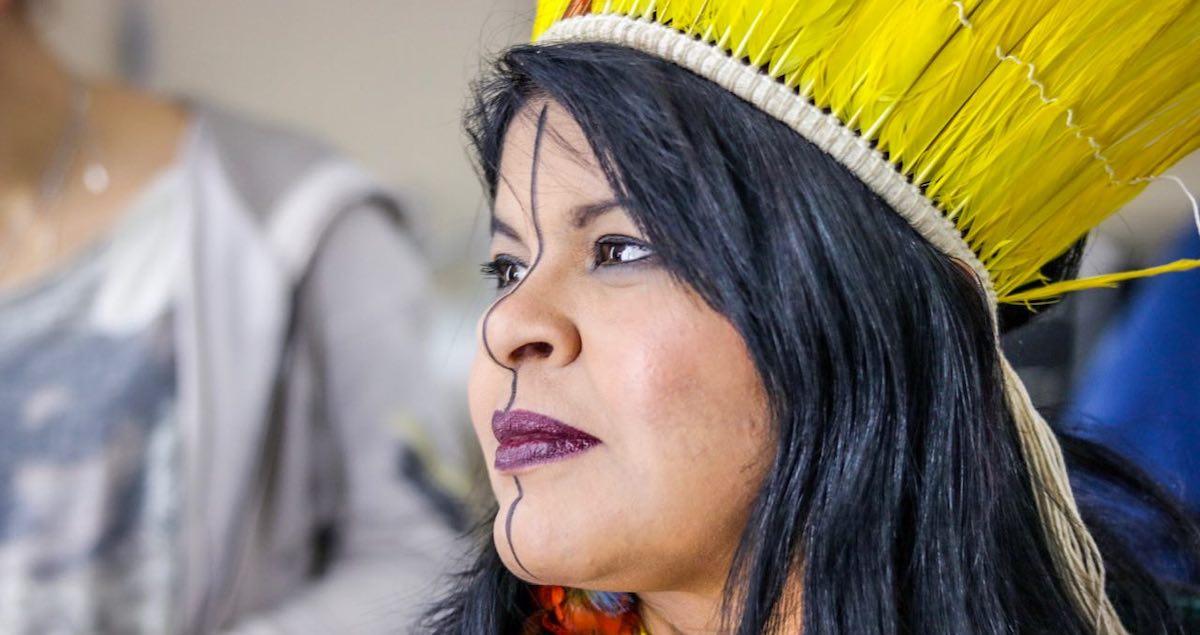


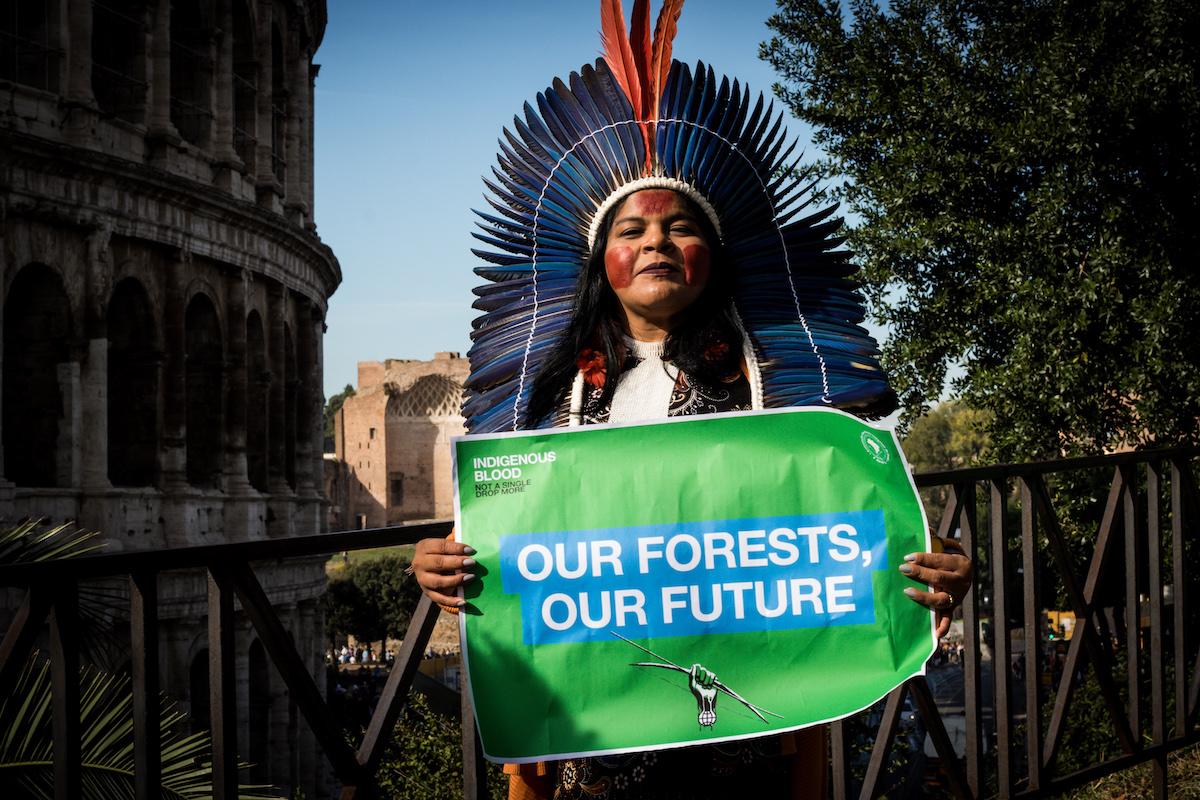

CHRIS HEDGES: The Anonymous Executioners of the Corporate State
October 7, 2021
Imprisoning the David to Chevron’s Goliath is the latest outrage by a U.S. judiciary now engineered to favor the interests of capital.

Steven Donziger in a video message to supporters on Sept. 30. (Steve Donziger, Twitter)
By Chris Hedges
ScheerPost.com
Judge Loretta Preska, an adviser to the conservative Federalist Society, to which Chevron is a major donor, sentenced human rights attorney and Chevron nemesis Steven Donziger to six months in prison Friday for misdemeanor contempt of court after he had already spent 787 days under house arrest in New York.
Preska’s caustic outbursts — she said at the sentencing, “It seems that only the proverbial two-by-four between the eyes will instill in him any respect for the law” — capped a judicial farce worthy of the antics of Vasiliy Vasilievich, the presiding judge at the major show trials of the Great Purges in the Soviet Union, and the Nazi judge Roland Freisler who once shouted at a defendant, “You really are a lousy piece of trash!”
Donziger, a graduate of Harvard Law School, has been fighting against polluting American oil companies for nearly three decades on behalf of indigenous communities and peasant farmers in Ecuador.
His only “crime” was winning a $9.5 billion judgment in 2011 against Chevron for thousands of plaintiffs. The oil giant had bought Texaco oil company holdings in Ecuador, inheriting a lawsuit alleging it deliberately discharged 16 billion gallons of toMoxic waste from its oil sites into rivers, groundwater, and farmland. Since the verdict, Chevron has come after him, weaponizing litigation to destroy him economically, professionally and personally.
More:
https://consortiumnews.com/2021/10/07/chris-hedges-the-anonymous-executioners-of-the-corporate-state/
Hundreds of three-eyed 'dinosaur shrimp' emerge after Arizona monsoon
By Laura Geggel about 5 hours ago
Their eggs can stay dormant for decades, waiting for water.
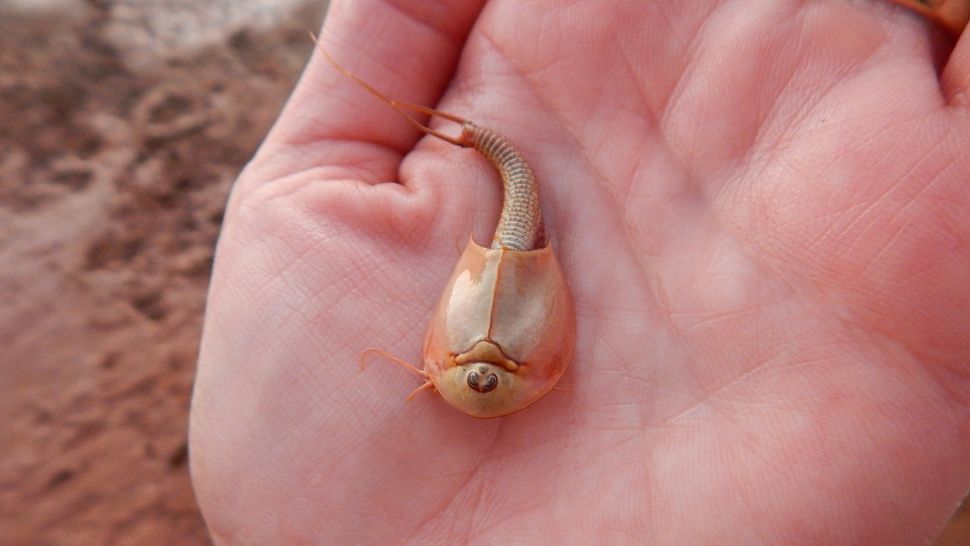
One of the triops — a small, three-eyed crustacean — from the ball court pond at Wupatki National Monument in Arizona. (Image credit: L.Carter/NPS)
Following a torrential summer downpour in northern Arizona, hundreds of bizarre, prehistoric-looking critters emerged from tiny eggs and began swimming around a temporary lake on the desert landscape, according to officials at Wupatki National Monument.
These tadpole-size creatures, called Triops "look like little mini-horseshoe crabs with three eyes," Lauren Carter, lead interpretation ranger at Wupatki National Monument, told Live Science. Their eggs can lay dormant for decades in the desert until enough rainfall falls to create lakes that provide real estate and time for the hatchlings to mature and lay eggs for the next generation, according to Central Michigan University.
Triops' appearances are so uncommon, that when tourists reported seeing them at a temporary, rain-filled lake within the monument's ceremonial ball court — a circular walled structure 105 feet (32 meters) across — the monument's staff weren't sure what to make of the critters.
Following a monsoon in late July, "We knew that there was water in the ball court, but we weren't expecting anything living in it," Carter said. "Then a visitor came up and said, 'Hey, you have tadpoles down in your ballcourt.'"
More:
https://www.livescience.com/dinosaur-shrimp-emerge-arizona?utm_source=notification
~ ~ ~

Wupatki National Monument
Introduction
Text-to-speech Audio
Wupatki, which means "Tall House" in the Hopi language, is a three-story Sinagua pueblo dwelling with more than 100 rooms. Before the site was permanently abandoned in 1225, the Wupatki Pueblo was the tallest, largest, and perhaps the richest and most influential pueblo around. It was home to upwards of 300 people, and several thousand more lived within a day’s walk. The Wupatki National Monument features this and numerous other settlement sites built by the Ancient Pueblo People, including the Sinagua, Cohonina, and Kayenta Anasazi. In total, there are upwards of 800 settlements on the 54-square mile site, and all of the dwellings at the site were built by the Anasazi and Sinagua Indians in the 12th and 13th centuries. Today, the Wupatki National Monument appears empty and abandoned. However, visitors to the area can discover ball courts similar to Mesoamerica and Hohokam tribes in Arizona, hundreds of ruined structures, and examples of a great cultural society that was involved in trade from as far away as the Pacific and the Gulf Coast.
More:
https://theclio.com/entry/13700

Declassified Documents Key to Judgment Against Colombian Paramilitary

The paramilitary known as “Macaco” (Carlos Mario Jiménez) is arrested upon his arrival in Colombia on July 20, 2019. (Source: Colombia Attorney General’s Office)
Court finds paramilitaries had “symbiotic relationship with Colombian state actors”
Published: Oct 4, 2021
Briefing Book #
778
Edited by Michael Evans
Washington, D.C., October 4, 2021 – Declassified State Department and Central Intelligence Agency (CIA) reports that “acknowledge the long-standing relationship between [Colombian] state security forces and the paramilitaries” are among the key evidence behind a historic $12-million judgment against a former Colombian paramilitary leader last week in U.S. federal court in Miami.
Federal Magistrate Judge Edwin Torres found that Carlos Mario Jiménez, the former paramilitary leader known as “Macaco,” was responsible for the murder of Colombian community leader Eduardo Estrada in 2001. The case was developed by the Center for Justice and Accountability (CJA) and the Colombian Commission of Jurists (CCJ) on behalf of victims in Colombia. More than eleven years in the making, the plaintiffs filed the initial complaint on June 15, 2010.
Colombian President Álvaro Uribe extradited Jiménez to the U.S. in 2008, where he was convicted and served 11 years of a 33-year sentence for drug trafficking. His extradition and the subsequent U.S. decision to focus solely on narcotrafficking charges, prevented thousands of victims of Macaco’s paramilitary group, the Bloque Central Bolivar (BCB), from seeking justice for assassinations, massacres, and other acts of violence. In 2019 Jiménez was released and repatriated to Colombia where he was immediately arrested on homicide and conspiracy charges.
In ruling for the plaintiffs, Torres cited “an abundance of evidence” that the BCB “operated in a symbiotic relationship with Colombian state actors” in Colombia’s Magdalena Medio. The evidence helped establish that paramilitaries were operating under color of law when they committed murders and other atrocities, a necessary condition to bring a claim under the U.S. Torture Victim Protection Act (TVPA).
More:
https://nsarchive.gwu.edu/briefing-book/colombia/2021-10-04/declassified-documents-key-judgment-against-colombian?eType=EmailBlastContent&eId=1bd466c6-a351-4c8e-a06b-b2a17b350632


NARCO-TRAFFICKING & ATTACKS ON HUMAN RIGHTS DEFENDERS
Cabrera v. Jiménez Naranjo

One of Colombia’s most violent paramilitary commanders, known as Macaco, confessed to the murders of hundreds of civilians committed by the Bloque Central Bolívar (BCB), a paramilitary group he founded in the late 1980s and led until its demobilization in 2005. Yet he has never been held to account for these crimes. He was extradited to the United States in 2008 on drug charges, and has so far enjoyed impunity for his role in the widespread human rights atrocities committed under his command. For over a decade, CJA has sought to hold him accountable for torture and extrajudicial killing in U.S. court.
On the night of July 16, 2001, Eduardo Estrada and his partner were walking down a street in San Pablo, Colombia, when a paramilitary soldier approached the pair and shot Eduardo execution-style in the head. The shooting occurred near a local police station. A government soldier passed by Eduardo, lying bleeding on the ground. Neither the police nor the soldier provided assistance. It was only after his family arrived at the scene and flagged down a passing car that he finally made it to a hospital. He died that night.
Over a thousand people attended Eduardo’s funeral. He had been a leader of the social justice organization Program for Peace and Development in the Middle Magdalena (PDP) and an active member of his local community. His assassin was a member of the right-wing paramilitary group known as the Bloque Central Bolívar (BCB), which had overtaken Eduardo’s town of San Pablo since 1999. The BCB was founded and commanded by Carlos Mario Jiménez Naranjo, known as Macaco. Members of the BCB later confessed that they had been ordered to kill Eduardo because his activities to benefit his community, including his work as a PDP leader, threatened their control over the region.
Alma Rosa Jaramillo Lafourie was another victim of the BCB. Because of her work as a human rights attorney and a PDP leader, the BCB denounced her as a left-wing rebel sympathizer and repeatedly threatened her at her home. On July 1, 2001, parts of Alma Rosa’s body were recovered from a river. She had been tortured, mutilated, and dismembered.
More:
https://cja.org/what-we-do/litigation/cabrera-v-jimenez-naranjo/
Here's an abbreviated list of benefits Cuban immigrants will receive if they reach US soil
without being caught first. It's a good idea to compare it to what awaits ALL other immigrants who reach US soil who are NOT Cuban immigrants:
Benefits of the Cuban Adjustment Act
In 1966 the government of the United States passed the Cuban Adjustment Act, which allows Cuban citizens who arrive in the country to enjoy certain immigration privileges. Thanks to this law, Cubans who migrate illegally to the US may be eligible to obtain the Green Card or permanent residence.
~ ~ ~
The most important advantage that Cuban immigrants have over those of other nationalities is that they immediately receive migratory benefits. By stepping on American soil regardless of the media, especially illegal ones, they immediately obtain legal status in the United States.
The US government immediately grants refugee status (prima facie) to Cubans fleeing the island. In addition, they obtain facilities for work and access to social programs.
Among the main benefits obtained through the Cuban Adjustment Law in the United States we find:Employment authorization automatically. Processing of the Legal Residence Card without the need to provide an affidavit of support. Assignment of the Social Security Number. State benefits of food and lodging. Adjustment of immigration status without leaving the country to carry out the consular processing.
More:
https://www.lluislaw.com/cuban-adjustment-act/
Included in, and by no means the end of additional benefits are medical expenses, financial expenses for education, very low cost loans for starting businesses, etc.
The easier path awarded these politically high-value immigrants have made it easy to create a class of immigrants who have lower birth rates, with children generally securing higher education levels, usually staying in parents' homes longer than any other immigrant group in the country.
Profile Information
Member since: 2002Number of posts: 163,221